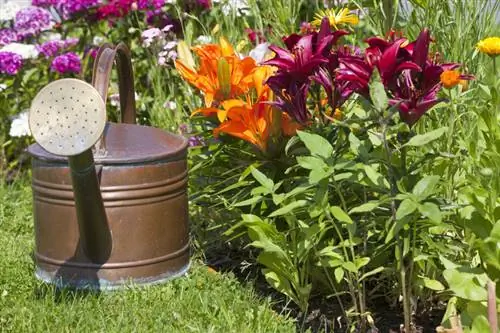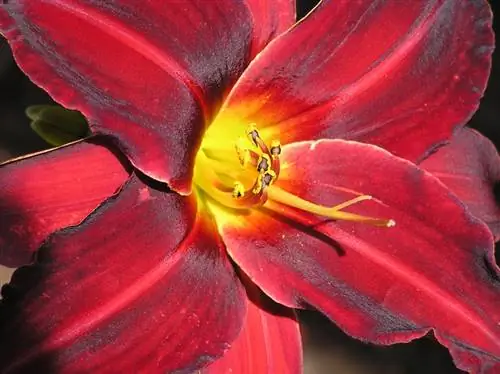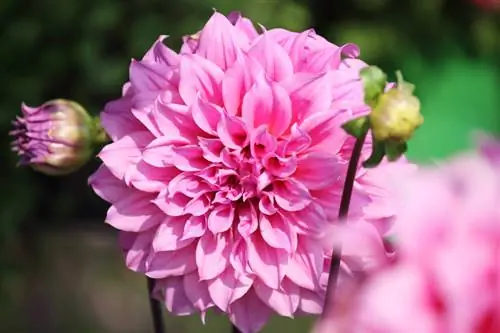- Author admin [email protected].
- Public 2023-12-16 16:46.
- Last modified 2025-01-23 11:20.
They don't bloom without a dose of care. In contrast to other plants, lilies are considered undemanding and easy to care for. But is it really like that? What care do they need?

How to properly care for lilies?
Lilies require regular fertilization, sufficient water and occasional pruning. Organic and mineral fertilizers such as horn shavings or blue grain are suitable for fertilizing. Regular irrigation and good drainage are essential. Remove wilted flowers to extend flowering time.
How often and with what should you fertilize lilies?
From the second year onwards, lilies should be fertilized at least once a year. The fertilizer can be given to the plants more frequently and at regular intervals.
During flowering, the fertilizer is used to prolong it. At the end of the flowering period, a moderate amount of fertilizer is also useful. The bulbs can absorb and collect the nutrients they need for the coming year.
Various organic and mineral fertilizers are suitable for fertilizing lilies. Humus, horn shavings, rock dust, nettle manure (€19.00 on Amazon) and blue grain have proven successful. Lilies in pots should be supplied with a complete fertilizer in liquid form.
Do lilies need to be watered?
Lilies need a moist substrate. Therefore, they should be watered regularly if there is no rain or if they are in the pot. Water is particularly important during the flowering period. Good drainage should be ensured beforehand.
How to propagate lilies?
The easiest way to propagate lilies is to divide the roots. This procedure should be carried out after flowering by autumn at the latest. The plants can then be overwintered. The second method of propagation of lilies is sowing. But the germination time of the seeds can be up to three years.
Are winterization measures negligible?
Not necessarily. Please note the following points when wintering:
- Placing lilies in the pot
- Cover lilies outdoors in rough locations with brushwood
- alternatively: dig up the onions and overwinter in sand, soil or sawdust
- before overwintering: cut down
- Allow onions to dry before overwintering
- move out from May
Which disease and pest are most common?
The disease that often occurs in lilies is stem rot. The cause is a fungal pathogen. This is attracted when the plants are waterlogged. The stems turn brown at the base and break off. The death of the lily is the result. Viral and bacterial diseases occur less frequently in lilies.
In terms of pests, it is primarily the lily hen that can cause the leaves to be eaten. This is a red colored beetle. He lays his eggs on the leaves. The hatched larvae are gray in color and eat the lily. This pest can be rinsed off using a shower. As a preventive measure, it helps to spray the lilies with tea made from field horsetail.
Should you cut lilies?
- cut off wilted flowers (extend the flowering period)
- if applicable Cut off seed heads to store seeds
- cut close to the ground in autumn
- Wait with autumn pruning until all parts of the plant have yellowed
Tips & Tricks
Mulch your lilies and plant ground cover over their root zone. This often eliminates the need to add fertilizer and watering has to be done less frequently or not at all.






